
M&A Due Diligence in India: How to Spot Target Company Non-Compliance
Warning Signs of Problems: IP that isn't registered, registrations that have expired, unclear ownership (e.g., if a contractor created the IP), claims that the company is copying others, or others are copying them. These issues can greatly lower the Consider that you are about to purchase a promising new company. You've discussed figures and are nearly prepared to sign the agreement. But what if there's a big problem hiding inside that company? What if a forgotten fine, a lawsuit you don't know about, or a small mistake in how they treat employees could turn your exciting new deal into a very expensive headache?
This isn't just a scary thought; it's a real risk when companies buy or merge with others (M&A) in India. That's why a careful check, called due diligence, isn't just a fancy business term. It's like having your own detective agency to find every possible risk before you put your name on anything.
Here at SKMC Global, we know that a successful M&A deal in India depends on looking very closely at the company you want to buy. So, let's learn how you can be a smart investigator, focusing on how to spot a target company's non-compliance (meaning they haven't followed the rules) and protect your money.
1. Why Checking Everything (Due Diligence in mergers and acquisitionsc) Is a Must-Do
Think of due diligence in mergers and acquisitions as the ultimate background check. When you buy a house, you look for cracks, check the pipes, and review old records, right? Buying a company is much, much bigger, with a lot more at stake.
The main purpose of due diligence is to fully reveal the true condition of the company you're looking at. It's about:
- Checking the Story: Is what the seller tells you actually true?
- Finding Surprises: "Discovering secret debts, future legal battles, or inefficient operations that could become expensive problems."
- Setting the Right Price: Changing how much you'll pay after seeing the company's full picture (its problems and chances).
- Getting a Better Deal: Giving you reasons to ask for better conditions, promises, and safety features in the final contract.
- Planning for Later: Understanding how the company works inside so that putting it together with your existing business goes smoothly after you buy it.
India has many laws and rules, both for the whole country and for individual states. In this complex environment, thorough m&a and due diligence is your best protection.
2. Your Checklist: What to Look At Very Closely
To really find problems, your due diligence needs to cover many different areas. Here are the main places you'll need to investigate like a detective:
The Company's Rulebook: Corporate & Secretarial Checks
What to check: This is where you look at the company's basic legal setup. Is it properly registered? "Are the company's main rulebooks (like its founding papers) current? Check that all official records (like who owns shares, who is on the board, and any company debts) are right and finished." Make sure meeting minutes for the board and shareholders are properly recorded and that all yearly reports and financial statements are filed on time with the Registrar of Companies (ROC), as required by the Company Law 2013.
Warning Signs of Problems: Missing or confusing records, no meeting notes, not appointing required directors (like a Resident Director or Women Director if needed), or mistakes in old share transfers. A big red flag is often not following Section 180(1)(c) of the Companies Act, 2013, which needs shareholder approval for large loans. Also, watch out for private companies (not small or government ones) that haven't converted their physical shares to digital format – this is a new rule.
The Money Story: Financial & Tax Health
What to check: Look deeply into their financial reports (balance sheets, profit & loss, cash flow), accounting rules, internal controls, audit reports, and all tax filings (Income Tax, GST, TDS – Tax Deducted at Source, customs duties). Look for any unpaid taxes. Pay extra attention to how they record money coming in, any possible future debts, money exchanged between related companies, and hidden financial commitments.
Warning Signs of Problems: Financial reports that don't make sense, hidden debts, not paying enough taxes (and don't forget stamp duty on agreements!), or clear mistakes with TDS rules. Also, remember foreign exchange rules (FEMA, RBI guidelines); mistakes here can cost a lot.
Legal Battles: Contracts & Lawsuits
What to check: Read all contracts and agreements (with customers, suppliers, employees, landlords, banks). Look for any current or threatened lawsuits, arbitration cases, government investigations, and make sure they follow laws specific to their industry.
Warning Signs of Problems: Confusing parts in contracts, not fulfilling contract promises, ongoing or possible lawsuits against the company, not following specific industry rules (like environmental permits for factories), or not telling you about official warnings from regulators. "Be very careful about any past or present actions that hint at bribery or cheating. Laws like the US FCPA, India's PCA, and the UK Bribery Act mean you could be held responsible for old mistakes."
Protecting Ideas: Intellectual Property (IP)
What to check: Make sure the company clearly owns its inventions (patents), brand names (trademarks), creative works (copyrights), and secret business details." Check that these are valid and can be enforced. Review any agreements about using IP or creating new IP, and ensure employee contracts properly give IP rights to the company.
Value of a company built on its ideas.
The People: Human Resources & Labor Laws
What to check: Look at their employee agreements and company rules for staff. See if they're paying all needed employee benefits, like PF, ESI, and gratuity. Check if they follow rules for minimum pay, factory safety, and if there are any current arguments with workers."
Warning Signs of Problems: Not paying required benefits, incorrect ways of firing employees, unresolved complaints from workers, or a history of worker strikes or unrest. For example, not paying gratuity contributions can even lead to serious trouble for directors.
Beyond Money: Environmental, Social, and Governance (ESG)
What to check: This is a growing area of due diligence. Look at environmental permits, how they control pollution, manage waste, their safety records, how they impact society, their internal company management rules, and if they have anti-bribery/anti-corruption (ABAC) programs.
Warning Signs of Problems: Expired environmental permits, past environmental violations, poor safety records, weak company management structures, or no strong anti-bribery program. Investors are increasingly penalizing companies with poor ESG records, and your new acquisition could become a target for activists or regulators if ESG risks are high.
3. Smart Tools for Modern Reviews
Checking a company used to mean piles of paper. Now, it's much more modern:
Online Rooms (VDRs): These are very safe online spaces. You share important papers there, and only allowed people can see them. They also track every change.
Smart Computer Programs (AI): Computers are now helping more and more. They quickly read huge numbers of documents, finding strange things, red flags, or mistakes. They do this much faster and better than people.
Deep Checks (Forensic Audits): If your first look shows big problems or hints of fraud (like odd money transfers or weak company rules), for compliance and non- compliance then you might need a deeper "forensic audit." This can find hidden financial tricks or secret bribery that normal checks might miss.
- Expert Advisors: This is perhaps the most important tool. Hiring experienced legal, financial, and tax experts who know a lot about Indian laws and rules for specific industries is vital. Their skill in finding small but important compliance and non-compliance issues, especially related to the Company Law 2013, FEMA, and SEBI rules, is priceless.
4. What's New: Recent Changes & Important Talks
India's rules for M&A are always changing. Staying up-to-date is key for good due diligence:
Companies Act, 2013 Updates:
Faster Mergers: New rules (Companies (Compromises, Arrangement and Amalgamations) Amendment Rules, 2023) aim to make some mergers quicker. But due diligence is still crucial to make sure your deal fits these rules and is proper.
New Data Protection Law (DPDP Act, 2023): This new law has a big effect on your checks (due diligence), especially if the company handles personal information. Buyers must now carefully see how the target company protects private data, follows this DPDP Act, and manages risks like data leaks.
This means looking closely at data agreements, how they get consent, and their cybersecurity. Not being careful here can lead to big fines.
Digital Shares Rule: A key point for private companies (not small or government ones) is the rule to convert physical shares into digital form. Not following this can be a big problem during due diligence and closing the deal, so check this early!
Auditor Reports: Proposed changes might make auditors explain why they resigned, including if they suspect fraud or major rule-breaking. This could be an early warning sign for buyers.
Competition Act, 2002 – New Rules:
Deal Value Check: The Competition Commission of India (CCI) now looks at the deal's value. If a global deal is worth more than INR 20 billion (about US$238 million) and the company being bought has "significant business in India" (based on things like user numbers or sales in India), it needs to be reported to the CCI. This means the CCI can look at more deals, especially in tech, so careful due diligence is needed to avoid issues and fines.
ESG & Anti-Corruption – Growing Importance:
Big news cases (like those involving Mondelēz-Cadbury India, Adani Green, Azure Power, Cognizant, Beam India) show that governments and the public are paying much more attention to ethical behavior and anti-bribery/anti-corruption (ABAC) rules. Due diligence now deeply checks for old bribery schemes, fake contracts with third parties, and environmental rule-breaking. The buyer can be held responsible for past bad acts.
It's becoming more important to make sure the target company has strong ABAC programs, ways for employees to report problems secretly, and regular training on rules.
5. Fixing Problems: Solutions, Not Stopping the Deal
Finding problems (non-compliance) doesn't always mean the deal is off. It's a chance to act smartly:
Fix It: For small problems, you can agree with the seller to fix them before or soon after the deal closes.
Change the Price: If the problem has a clear money cost (like a coming fine), you can lower the purchase price to cover it.
- Get Protections: Ask for special clauses in the sales agreement that make the seller financially responsible for specific problems you found, if those problems happen after you buy the company.
- Ask for Stronger Promises: Make sure the seller gives strong "representations and warranties" in the contract, promising that they followed rules in the past and told you everything.
- Walk Away: For big, unfixable problems that completely change the deal's value or create too much risk, don't be afraid to walk away. It's better to lose a deal than to buy a big problem.
Conclusion
"The world of buying and merging companies in India is exciting but can be tricky. Here, a careful check (due diligence) is your best helper. It's not just about simple tasks; it's about handling problems wisely and making your company more valuable. By knowing common issues (like following or not following rules), using new tools, and getting help from experienced experts, you can handle India's special M&A world with confidence. This makes sure your new purchase truly helps your business grow and win."
For expert help with M&A due diligence and smart advice on Indian Company Law 2013 and following all rules, visit www.skmcglobal.com. Our team is here to help you make smart choices and achieve great M&A success.
Recent Posts
-
 How to setup a Semiconductor Unit in Gujarat...
Dec 26,2025
How to setup a Semiconductor Unit in Gujarat...
Dec 26,2025
-
 Process of Setting Up a Gratuity Fund Trust in Ind...
Dec 18,2025
Process of Setting Up a Gratuity Fund Trust in Ind...
Dec 18,2025
-
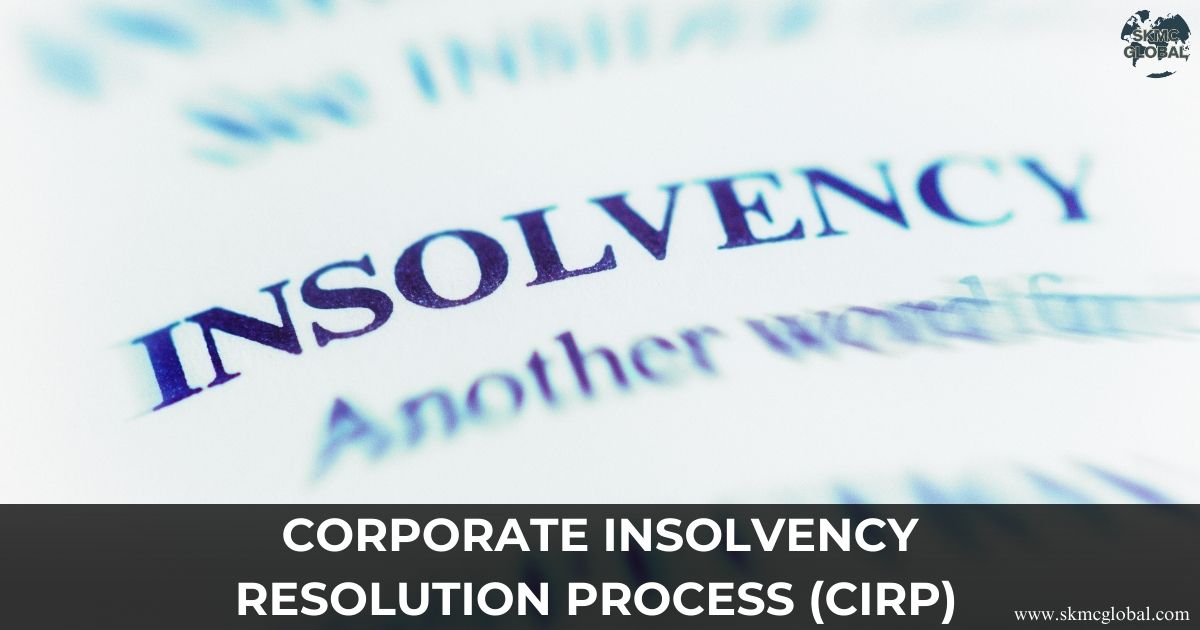 Corporate Insolvency Resolution Process (CIRP) und...
Dec 17,2025
Corporate Insolvency Resolution Process (CIRP) und...
Dec 17,2025
-
 Closure of a company in India...
Dec 12,2025
Closure of a company in India...
Dec 12,2025
-
 Importance of Black Money Act 2015...
Dec 11,2025
Importance of Black Money Act 2015...
Dec 11,2025
-
 What are undisclosed assets and income under Black...
Dec 08,2025
What are undisclosed assets and income under Black...
Dec 08,2025
-
 Importance of PIMS certification for Importers in ...
Dec 06,2025
Importance of PIMS certification for Importers in ...
Dec 06,2025
-
 Incorporation of Company in UAE...
Dec 03,2025
Incorporation of Company in UAE...
Dec 03,2025
-
 Legal Entity Identifier LEI - Purpose and Applicab...
Dec 01,2025
Legal Entity Identifier LEI - Purpose and Applicab...
Dec 01,2025
-
 Implementation of New Labour Codes 2025...
Nov 29,2025
Implementation of New Labour Codes 2025...
Nov 29,2025
-
 A Step-by-Step Guide to a Smooth Payroll Outsourci...
Nov 28,2025
A Step-by-Step Guide to a Smooth Payroll Outsourci...
Nov 28,2025
-
 PESO Certification in India...
Nov 26,2025
PESO Certification in India...
Nov 26,2025
-
 Family Trusts for NRIs- Managing Indian Assets fro...
Nov 24,2025
Family Trusts for NRIs- Managing Indian Assets fro...
Nov 24,2025
-
 Decoding Disclosures: Section 184 of Companies Act...
Nov 21,2025
Decoding Disclosures: Section 184 of Companies Act...
Nov 21,2025
-
 All you want to know about Recycling business in I...
Nov 20,2025
All you want to know about Recycling business in I...
Nov 20,2025
-
 What is Seed Fund Scheme and its relevance for Sta...
Nov 19,2025
What is Seed Fund Scheme and its relevance for Sta...
Nov 19,2025
-
 Incorporation of Company in Singapore...
Nov 18,2025
Incorporation of Company in Singapore...
Nov 18,2025
-
 How to upgrade your AEO T2 certification to AEO T3...
Nov 15,2025
How to upgrade your AEO T2 certification to AEO T3...
Nov 15,2025
-
 What is the relevance of APEDA Registration and it...
Nov 14,2025
What is the relevance of APEDA Registration and it...
Nov 14,2025
-
 Applicability of Indian Accounting Standards for c...
Nov 11,2025
Applicability of Indian Accounting Standards for c...
Nov 11,2025
-
 Public vs. Private Trust: key Differences in Regis...
Oct 28,2025
Public vs. Private Trust: key Differences in Regis...
Oct 28,2025
-
 Donation and Foreign Contributions to Trusts in In...
Oct 23,2025
Donation and Foreign Contributions to Trusts in In...
Oct 23,2025
-
 Redeemable Preference Shares as a Financial Tool...
Oct 22,2025
Redeemable Preference Shares as a Financial Tool...
Oct 22,2025
-
 STPI Unit and Non-STPI Unit...
Oct 16,2025
STPI Unit and Non-STPI Unit...
Oct 16,2025
-
 Country-by-Country Reporting (CbCR) and Its Evolvi...
Oct 09,2025
Country-by-Country Reporting (CbCR) and Its Evolvi...
Oct 09,2025
-
 What is Free Trade Agreement and Certificate of Or...
Oct 08,2025
What is Free Trade Agreement and Certificate of Or...
Oct 08,2025
-
 What is the relevance of status holders certificat...
Oct 06,2025
What is the relevance of status holders certificat...
Oct 06,2025
-
 Redemption of Advance Authorization under Foreign ...
Oct 04,2025
Redemption of Advance Authorization under Foreign ...
Oct 04,2025
-
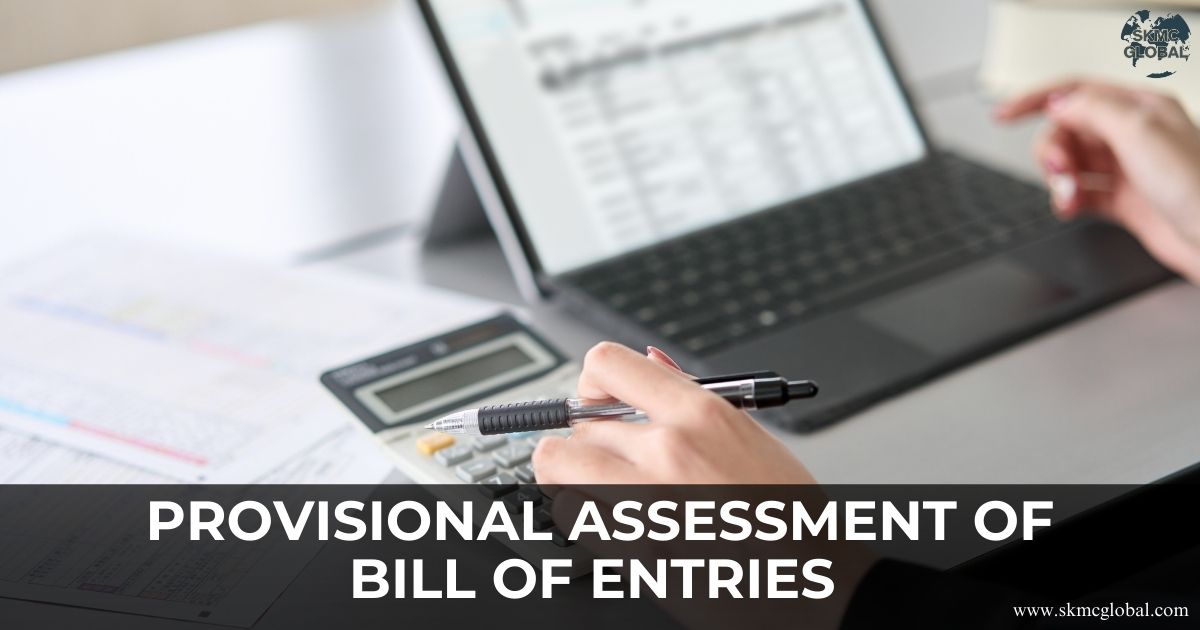 What is provisional assessment of Bill of Entries ...
Sep 29,2025
What is provisional assessment of Bill of Entries ...
Sep 29,2025
-
 Redemption of EPCG License...
Sep 26,2025
Redemption of EPCG License...
Sep 26,2025
-
 MOOWR (Manufacturing and Other Operations in Wareh...
Sep 24,2025
MOOWR (Manufacturing and Other Operations in Wareh...
Sep 24,2025
-
 Procedure to Apply SCOMET License...
Sep 22,2025
Procedure to Apply SCOMET License...
Sep 22,2025
-
 Landscape of Semiconductor Industry while Doing Bu...
Sep 18,2025
Landscape of Semiconductor Industry while Doing Bu...
Sep 18,2025
-
 The Hidden Costs of In-House Accounting v/s Outsou...
Sep 17,2025
The Hidden Costs of In-House Accounting v/s Outsou...
Sep 17,2025
-
 TDS on sale of immovable property by an nri...
Sep 10,2025
TDS on sale of immovable property by an nri...
Sep 10,2025
-
 Setting up a Project Office in India...
Sep 08,2025
Setting up a Project Office in India...
Sep 08,2025
-
 Tax Implication for Transferring NRO Funds to NRE ...
Sep 05,2025
Tax Implication for Transferring NRO Funds to NRE ...
Sep 05,2025
-
 How outsourcing CFO services helps the corporates ...
Aug 27,2025
How outsourcing CFO services helps the corporates ...
Aug 27,2025
-
 Why a Periodical Cash Flow Statement is Necessary ...
Aug 26,2025
Why a Periodical Cash Flow Statement is Necessary ...
Aug 26,2025
-
 What is FATCA and CRS reporting and its difference...
Aug 22,2025
What is FATCA and CRS reporting and its difference...
Aug 22,2025
-
 What are unclaimed TDS Credits and how to claim it...
Aug 21,2025
What are unclaimed TDS Credits and how to claim it...
Aug 21,2025
-
 Digital Taxation is reshaping Tax Nexus Between Ju...
Aug 20,2025
Digital Taxation is reshaping Tax Nexus Between Ju...
Aug 20,2025
-
 Procedure to Take PF Registration and Its Complian...
Aug 18,2025
Procedure to Take PF Registration and Its Complian...
Aug 18,2025
-
 Procedure to take PSARA License...
Aug 11,2025
Procedure to take PSARA License...
Aug 11,2025
-
 Mandatory factory license while setting up manufac...
Aug 08,2025
Mandatory factory license while setting up manufac...
Aug 08,2025
-
 Procedure for obtaining NBFC Registration in India...
Aug 04,2025
Procedure for obtaining NBFC Registration in India...
Aug 04,2025
-
 FSSAI License registration for Food Business...
Jul 14,2025
FSSAI License registration for Food Business...
Jul 14,2025
-
 How Management Information System (MIS) reporting ...
Jul 11,2025
How Management Information System (MIS) reporting ...
Jul 11,2025
-
 IFRS 9 impairment- A complete guide...
Jul 12,2025
IFRS 9 impairment- A complete guide...
Jul 12,2025
-
 Why most of the companies are shifting to hr and p...
Jul 10,2025
Why most of the companies are shifting to hr and p...
Jul 10,2025
-
 A complete guide on valuation of shares...
Jul 10,2025
A complete guide on valuation of shares...
Jul 10,2025
-
 BIS registration for foreign manufacturer...
Jul 09,2025
BIS registration for foreign manufacturer...
Jul 09,2025
-
 Understanding the Scope of the Shops and Establish...
Jul 08,2025
Understanding the Scope of the Shops and Establish...
Jul 08,2025
-
 Coso framework: Complete guide on internal control...
Jun 26,2025
Coso framework: Complete guide on internal control...
Jun 26,2025
-
 Components and Process for Conducting Internal Aud...
Jun 25,2025
Components and Process for Conducting Internal Aud...
Jun 25,2025
-
 What is ICFR and Why It is Important for Businesse...
Jun 24,2025
What is ICFR and Why It is Important for Businesse...
Jun 24,2025
-
 Understanding WPC Certification and its applicabil...
Jun 23,2025
Understanding WPC Certification and its applicabil...
Jun 23,2025
-
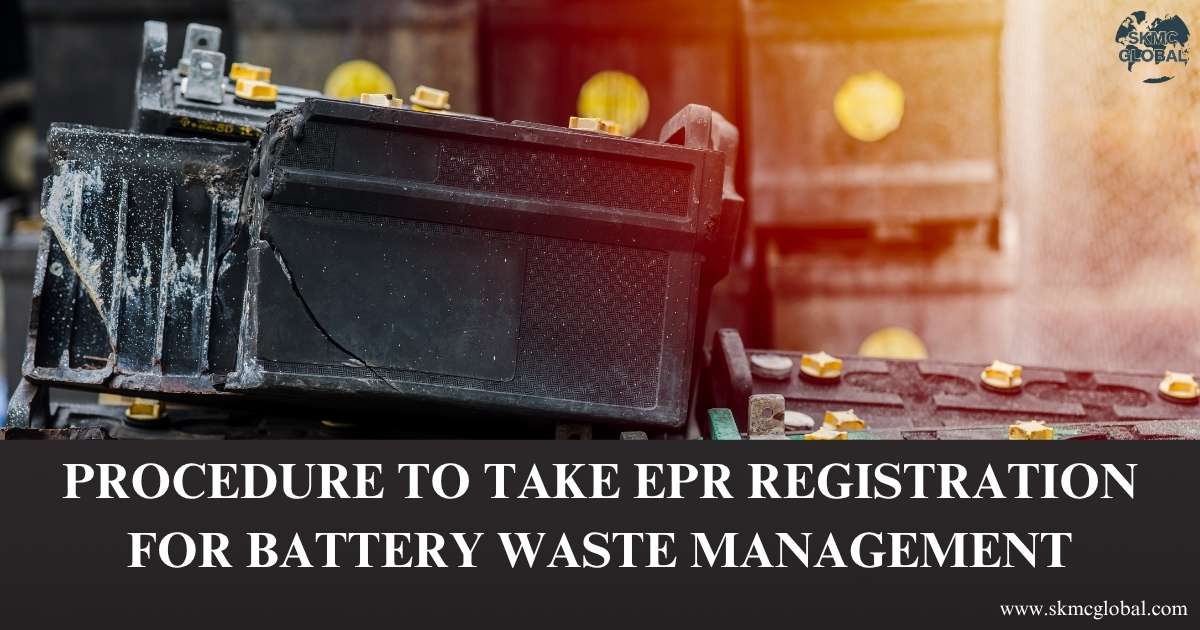 Procedure to take EPR registration for battery was...
Jun 21,2025
Procedure to take EPR registration for battery was...
Jun 21,2025
-
 3PL Logistics...
Jun 19,2025
3PL Logistics...
Jun 19,2025
-
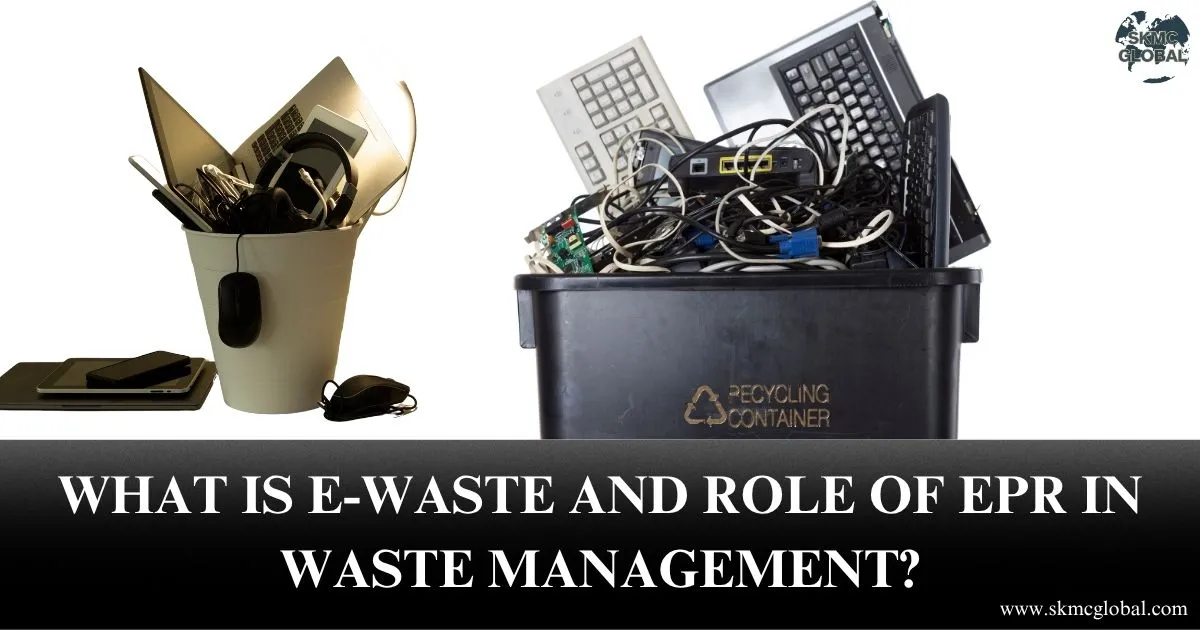 What is E-Waste and role of EPR in Waste Managemen...
Jun 17,2025
What is E-Waste and role of EPR in Waste Managemen...
Jun 17,2025
-
 M&A Due Diligence in India: How to Spot Target Com...
Jun 16,2025
M&A Due Diligence in India: How to Spot Target Com...
Jun 16,2025
-
 BIS crs certification for electronic products...
Jun 12,2025
BIS crs certification for electronic products...
Jun 12,2025
-
 All you need to know about WPC ETA certification f...
Jun 11,2025
All you need to know about WPC ETA certification f...
Jun 11,2025
-
 What is CDSCO Registration under The Drugs & Cosme...
Jun 10,2025
What is CDSCO Registration under The Drugs & Cosme...
Jun 10,2025
-
 Procedure to Take CDSCO Registration in India: A C...
Jun 09,2025
Procedure to Take CDSCO Registration in India: A C...
Jun 09,2025
-
 All You Need to Know About AERB Registration...
Jun 07,2025
All You Need to Know About AERB Registration...
Jun 07,2025
-
 Understanding POSH (Prevention of Sexual Harassmen...
Jun 03,2025
Understanding POSH (Prevention of Sexual Harassmen...
Jun 03,2025
-
 Chartered Accountant's role in financial managemen...
May 23,2025
Chartered Accountant's role in financial managemen...
May 23,2025
-
 5 Things to keep in your mind while running payrol...
May 17,2025
5 Things to keep in your mind while running payrol...
May 17,2025
-
 Why BIS Certification is Crucial for Importers and...
May 15,2025
Why BIS Certification is Crucial for Importers and...
May 15,2025
-
 Top 7 Reasons Indian Entrepreneurs Are Switching t...
May 07,2025
Top 7 Reasons Indian Entrepreneurs Are Switching t...
May 07,2025
-
 Incorporation of Company in Japan...
Apr 24,2025
Incorporation of Company in Japan...
Apr 24,2025
-
 How to set up a Representative Office in Singapore...
Apr 14,2025
How to set up a Representative Office in Singapore...
Apr 14,2025
-
 BIS certificate for medical equipments...
Apr 09,2025
BIS certificate for medical equipments...
Apr 09,2025
-
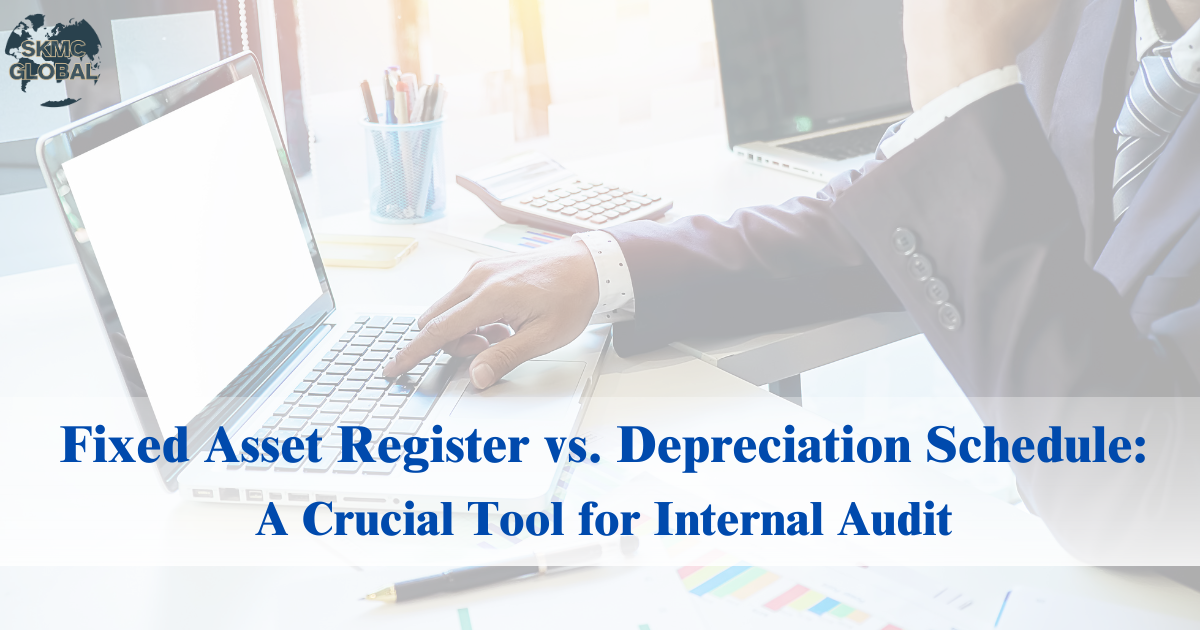 Fixed Asset Register v/s Depreciation Schedule: A ...
Apr 02,2025
Fixed Asset Register v/s Depreciation Schedule: A ...
Apr 02,2025
-
 Role of AI in Accounting...
Mar 26,2025
Role of AI in Accounting...
Mar 26,2025
-
 Capital Structure & its Impact on Profitability...
Feb 21,2025
Capital Structure & its Impact on Profitability...
Feb 21,2025
-
 Union Budget 2025...
Feb 01,2025
Union Budget 2025...
Feb 01,2025
-
 What is EPR in Plastic waste Management? ...
Jul 12,2022
What is EPR in Plastic waste Management? ...
Jul 12,2022
-
 Lithium-ion Battery Recycling Plant Setup in India...
May 10,2022
Lithium-ion Battery Recycling Plant Setup in India...
May 10,2022
-
 Setting up E-waste Recycling Plant Setup...
Jan 12,2022
Setting up E-waste Recycling Plant Setup...
Jan 12,2022
-
 Applicability of Labour Laws in India...
Jul 15,2021
Applicability of Labour Laws in India...
Jul 15,2021
-
 Basis to Outsource Finance and Accounting Services...
Oct 31,2021
Basis to Outsource Finance and Accounting Services...
Oct 31,2021
